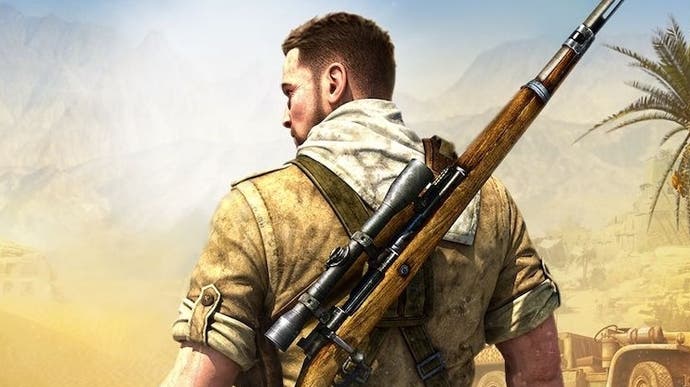Rebellion's Sniper Elite 3 Switch port hits the target
Scoping out some impressive conversion work.
Yes, it's another Switch port, but Sniper Elite 3 Ultimate Edition is a rather interesting example that's certainly worth a closer look. The original game hails from the early beginnings of the current-gen console era, where developers were still getting to grips with the new wave of hardware - highly enjoyable and technically competent, but very much a game of its time. The nature of the game's origins, combined with some strategic but sympathetic technical nips and tucks, produces an experience that adapts well to Nintendo's console hybrid.
Even at the content level, the Switch version acquits itself well. The core single-player mode, the eight-player online multiplayer and all associated DLC is included, with Rebellion concentrating on compression and optimisation to allow for the whole package to sit within a 6.3GB storage footprint. Even the basic tech metrics are creditable. Sniper Elite 3 ran at 1080p on PlayStation 4, and drops to 1632x918 on Switch with seamless dynamic resolution in play, taking us down to 720p in the most graphically intense areas. In handheld mode, nothing is taken away from the visuals bar pixel-count - 918p becomes 720p, with a lower bounds of 1120x630.
DRS transitions are unnoticeable for the most part, as Rebellion only adjusts resolution when the camera is moving, gradually shifting it back higher when the GPU resources become available. The game still looks decent connected to an HDTV but in common with many Switch titles, I'd say it works better in handheld mode. Beyond resolution, other compromises are well handled - several ports have seen poor quality, compressed audio but Sniper Elite 3 sounds just as it should.
In terms of the game's visual make-up, everything holds up well. Shadow quality sees a minor, mostly unnoticeable drop in quality, while geometry and LODs can be pared back in some instances, with some tweaks to lighting too. Performance shines where it matters though, and as you navigate the open terrain, textures and geometry stream in very smoothly. Texture quality itself is also impressive, with the game using the 1024x1024 texture maps used on PC's high settings. We can also report that the anatomically correct - but sometimes gruesome - x-ray kill shots are fully replicated on Switch.
Post effects-wise, the game holds up. A form of bloom makes the grade and depth of field is implemented in cutscenes, giving lovely bokeh refraction patterns on the foreground. We even get reasonably high resolution alpha effects, so Sniper Elite's more explosive moments have all the impact of the other console versions. There are some minor tweaks though: ambient occlusion - the shade between objects - has a somewhat thicker look on Switch, but the change that mostly stands out is the removal of light shafts and lens flare.
On a deeper level, Rebellion has a nicely multi-threaded engine and Switch's three available CPU cores are accommodated well here, with the developer utilising the more powerful, efficient Neon instructions ARM implemented for SIMD performance benefits across a range of in-game systems. In fact the game is well optimised in several areas, notably for the way assets and levels load in. From the front menu, you're looking at around a ten second wait to get into any mission. And once you're in, performance is solid at 30 frames per second, whether you're playing docked or in handheld mode. The engine itself has been ported over to Nintendo's NVM graphics API, even though the system allows for easier porting via OpenGL or Vulkan support - Rebellion's aim is to bring their tech as close to the architecture as possible.
This is another key difference from the PS4 and Xbox One builds that tried - with somewhat variable levels of success - to hit 60fps. It's safe to say that the experience was inconsistent, especially on the Microsoft console, and I actually think I prefer the nigh-on locked 30fps that Sniper Elite 3 delivers on Switch. Gameplay feels evenly paced, v-sync is locked and across detailed analysis of five missions and online plays, no major dips from the target were recorded.
The best part of the package here is it's feature complete. It's a stable 30fps. It has multiplayer, all the missions and delivers exactly what it says on the tin. A Switch port like, say, Divinity: Original Sin 2 shows a game migrating from another console and only just squeezing through when it comes to hitting acceptable performance. By comparison Sniper Elite 3 is a great example of a game nailing what it sets out to achieve, and doing it at a solid frame-rate.
With Sniper Elite 2 already available on the Nintendo hybrid, the sequence seems to be building up to arrival of Sniper Elite 4 - a far more taxing, ambitious game that I'd love to check out, based on what Rebellion has delivered here. Whether it's feasible is most likely down to how much of a challenge the developer is ready to take on, but on the basis of this what we're seeing here, we're eager to see how much further the studio can push the platform.


